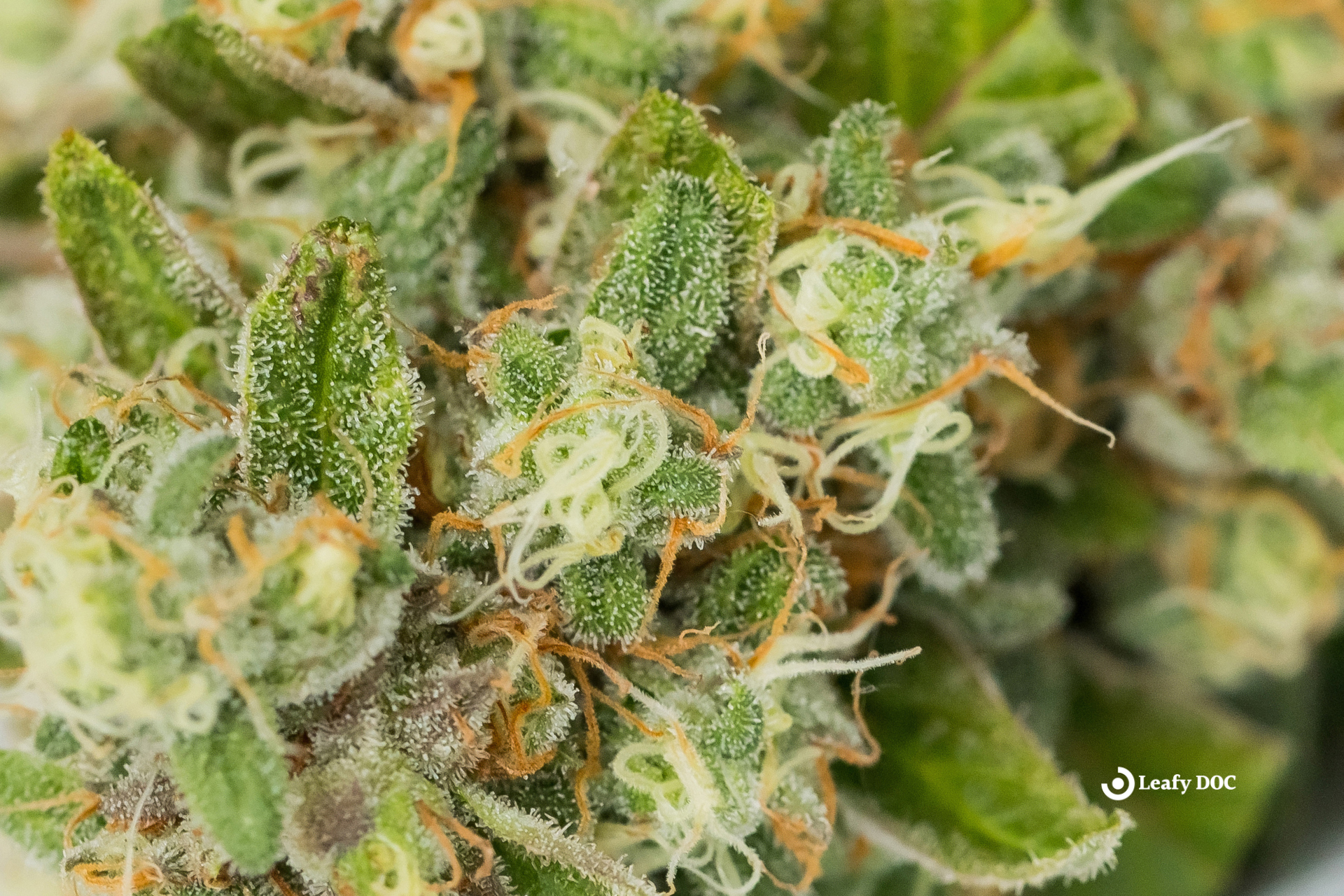Terpenes in Cannabis: Understanding Their Effects and Benefits
by Haley Mills · July 4, 2023
Understand the role of terpenes in cannabis and how they impact your health. Learn about the unique properties of different cannabis aromatics and how they can be used for treatment.

The botanical world is a symphony of chemical compounds, each contributing to the distinctive characteristics of the plants we encounter; in the illustrious realm of Cannabis sativa, a group of aromatic compounds known as terpenes have taken center stage for their significant role in shaping the plant’s unique profile. These volatile organic compounds account for the plant’s rich, diverse aromas and play an integral part in the holistic experience of cannabis consumption, from the recreational to the medicinal.
This article dives into the mystique of terpenes, exploring their composition, influence on the entourage effect, therapeutic potential, and much more. By looking into these fascinating compounds’ scientific intricacies and potential benefits, we aim to understand terpenes’ essential role in the cannabis plant comprehensively.
Terpenes 101: A Basic Overview
Terpenes, derived from the word ‘turpentine,’ are a class of organic compounds produced by various plants, including cannabis. Cannabis plants create terpenes, and these compounds are responsible for the unique aroma and flavor of many plants, fruits, and flowers. In nature, terpenes serve a protective function, repelling predators and luring pollinators. In cannabis, they contribute to the plant’s unique sensory profile and influence its therapeutic properties.
The Chemistry of Terpenes in Weed
Terpenes are composed of isoprene units, with the number of these units determining their classification. Monoterpenes, like limonene and myrcene, have two isoprene units, while sesquiterpenes, such as caryophyllene, have three. This might seem a minute distinction, but it greatly influences the terpene’s properties, volatility, and aroma. In cannabis, these compounds are synthesized in the plant’s trichomes—the same glandular structures where THC and other cannabinoids are produced.
The Role of Terpenes in Cannabis Aroma and Flavor
Each cannabis strain has a distinct aroma, ranging from fruity to piney, earthy to citrusy, and more. This is largely due to each strain’s unique blend of terpenes. Myrcene, for example, imparts an earthy, musky scent and is often associated with sedative effects. Conversely, Limonene provides a citrusy aroma and is linked with uplifting and stress-relieving properties. These aromatic profiles offer a unique sensory experience and hint at each strain’s potential therapeutic effects.
Terpenes and the Entourage Effect: A Symphony of Influence
In isolation, each terpene has its own set of properties, but when they interact with other compounds in the cannabis plant, something extraordinary happens. This phenomenon, known as the entourage effect, suggests that cannabinoids and terpenes work together, enhancing each other’s effects and therapeutic benefits. For instance, linalool and limonene can augment the anxiety-reducing effects of CBD, while myrcene can enhance THC’s psychoactive effects.
Common Terpenes Found in Cannabis
Cannabis plants are home to more than 200 terpenes, each contributing to the plant’s unique profile. Some of the most common ones include myrcene, known for its earthy aroma and sedative effects; limonene, recognized for its uplifting and stress-relieving properties; pinene, associated with increased alertness and memory retention; linalool, linked with relaxation and anxiety relief; and caryophyllene, reputed for its spicy aroma and potential anti-inflammatory properties.
Myrcene: The Most Abundant Terpene in Cannabis
Myrcene, often described as having an earthy, musky aroma reminiscent of cloves, is the most abundant terpene in many cannabis strains. Besides contributing to the plant’s scent, myrcene is thought to have sedative effects and may play a role in the couch-lock phenomenon associated with certain strains of cannabis. It’s also been studied for potential anti-inflammatory and analgesic properties.
Limonene: A Citrusy Component of Cannabis
Limonene is the second most common terpene in cannabis, but it’s most famous for its strong presence in citrus fruits. Its sweet, lemony scent is unmistakable. Beyond its aroma, limonene has demonstrated potential mood-enhancing properties and may help reduce stress and anxiety. Its ability to absorb other terpenes makes it a crucial player in the cannabis industry.
Linalool and Its Role in Cannabis
Not just exclusive to cannabis, linalool is the terpene also responsible for the characteristic scent of lavender. This terpene has been associated with calming and relaxing effects, potentially aiding in stress relief and sleep. In the context of cannabis, strains high in linalool might be particularly beneficial for individuals dealing with anxiety, stress, and insomnia.
Pinene: The Terpene Behind Pine’s Scent
As its name implies, pinene is responsible for the fresh, pine-like scent found in many plants, including certain cannabis strains. It is actually the most common terpene in the plant kingdom and can be found in pine trees. In terms of its effects, pinene is known for promoting alertness and potentially counteracting some of the cognitive effects of THC. It also exhibits anti-inflammatory and antioxidant properties and may assist in opening up airways, acting as a bronchodilator.
Caryophyllene: Spicing Up Cannabis
With its warm, spicy aroma, Caryophyllene is a unique terpene that also functions as a dietary cannabinoid. It selectively binds to the CB2 receptor, a part of the endocannabinoid system associated with the immune system and peripheral tissues, but doesn’t produce psychoactive effects. Preliminary studies suggest that this terpene might exhibit anti-inflammatory and analgesic properties, making it a topic of interest for potential therapeutic applications.
Therapeutic Potential of Cannabis Terpenes
The therapeutic potential of terpenes is vast and varies widely from terpene to terpene. Some, like limonene and linalool, may have mood-enhancing or calming properties. Others, like myrcene and caryophyllene, could provide anti-inflammatory and analgesic benefits. Although cannabis terpene research is ongoing, these compounds offer promising avenues for health and wellness applications, individually and through the entourage effect.
Terpenes and Cannabinoids: A Unique Interplay
The relationship between terpenes and cannabinoids within the cannabis plant is complex. Terpenes can modify how our bodies interact with cannabinoids, enhancing or mitigating their effects. For instance, myrcene is known to potentiate the psychoactive effects of THC, while pinene may help counterbalance it. This interplay is an excellent example of the entourage effect and highlights the importance of whole-plant cannabis use.
Terpenes in CBD and Hemp Products
The role of terpenes extends beyond THC-dominant cannabis strains. In fact, they also play a significant part in shaping the effects and benefits of CBD and hemp products. These cannabis products, particularly full-spectrum extracts, contain a mix of cannabinoids and terpenes that work together to produce a more substantial effect than any cannabis compounds would individually.
Extraction and Preservation of Terpenes
Extraction and preservation of terpenes is a delicate process, as these compounds are sensitive to heat and can easily degrade. Methods like steam distillation and cold pressing are commonly used to extract terpenes but must be performed at low temperatures to preserve their integrity. Additionally, storing cannabis properly can help maintain its terpene profile, ensuring a richer and more enjoyable experience.
Terpenes and Essential Oils
The connection between terpenes and essential oils is a fundamental one. Essentially, terpenes are the primary constituents of the essential oils found in many types of medicinal plants and flowers. They are responsible for the characteristic scent of essential oils, and more importantly, they contribute to the therapeutic properties of a cannabis extract.
For example, limonene, a common terpene, is the primary component of citrus essential oils and is often associated with uplifting and stress-relieving properties. Similarly, linalool, another well-known terpene, is the dominant compound in lavender essential oil and is well-reputed for its calming and relaxing effects.
In the world of aromatherapy, these terpenes, through the medium of essential oils, are used to influence mood, promote relaxation, and support overall health and wellness. When these oils are diffused, the aromatic terpenes are released into the air, inhaled, and then interact with the body’s limbic system, which controls emotions and memory.
Depending on the specific terpenes present, this interaction can induce different physiological responses. For example, essential oils rich in terpene eucalyptol, like eucalyptus oil, might promote clear breathing and open airways. In contrast, those rich in caryophyllene, such as clove oil, could possibly provide pain relief and anti-inflammatory benefits.
In topical applications, the terpenes in essential oils can also be absorbed through the skin, offering localized benefits. For instance, a massage with an essential oil blend containing terpenes and other cannabis compounds could potentially help alleviate muscle tension and promote relaxation.
Popular Cannabis Strains & Their Terpene Profiles
1. Blue Dream is a popular hybrid strain originating from a cross between Blueberry Indica and Sativa Haze. This strain is well-known for its balanced effects, providing users with gentle cerebral invigoration and full-body relaxation. The dominant terpene in Blue Dream is myrcene, which is responsible for its sweet, berry-like aroma and potential sedative effects. Other significant terpenes in this strain include pinene and caryophyllene, which may contribute to their uplifting and calming properties.
2. Sour Diesel is a Sativa-dominant strain revered for its energizing and cerebral effects. Often used to combat stress and fatigue, this strain features a pungent, diesel-like aroma, hence its name. The primary terpene in Sour Diesel is limonene, which lends a slightly citrusy undertone to its scent. Limonene is known for its mood-enhancing and stress-relieving properties, which may contribute to the uplifting effects of this strain. Other prominent terpenes in Sour Diesel include caryophyllene and myrcene.
3. OG Kush is a classic hybrid strain that has gained popularity for its potent, stress-relieving effects and distinctive earthy, piney aroma. The main terpene in OG Kush is myrcene, followed by limonene and caryophyllene. Combining these terpenes may contribute to the strain’s potential relaxing and mood-enhancing effects. OG Kush is often used to alleviate stress, anxiety, and insomnia and is a parent strain to other popular varieties, such as GSC (Girl Scout Cookies) and Headband.
The Future of Terpene Research in Cannabis
Terpene research is a rapidly growing field with enormous potential. As we continue to unravel the intricate relationship between terpenes, cannabinoids, and their effects on the human body, it becomes increasingly clear that these compounds hold significant therapeutic promise. The scientific community is taking note and investing in extensive research to explore the uncharted territories of terpene science.
One groundbreaking study, published in the British Journal of Pharmacology in 2011, has laid the foundation for understanding the synergistic effects of cannabinoids and terpenes, known as the entourage effect. The study, conducted by Dr. Ethan Russo, explored how terpenes play a role in interacting with cannabinoids to enhance therapeutic effects. The findings suggest that the future of cannabis-based medications could lie in formulations that maintain the integrity of the plant’s full spectrum of compounds.
Another study, published in the European Journal of Medicinal Chemistry in 2018, focused on terpene beta-caryophyllene. This research found that beta-caryophyllene might have potential therapeutic applications due to its unique binding ability to the CB2 receptor. As the only terpene is known to interact directly with the endocannabinoid system, caryophyllene’s potential is thoroughly explored in developing new therapeutic strategies.
Meanwhile, a 2021 study published in the journal ACS Omega evaluated how different extraction methods affect the terpene content of cannabis. This study could have significant implications for the future, as understanding how to maximize terpene extraction and preservation may lead to higher-quality cannabis products that better retain the plant’s natural therapeutic properties.
Summary: Unraveling the World of Terps
As we explore the complex composition of Cannabis sativa, we discover the profound significance of terpenes. These aromatic compounds are not merely responsible for the plant’s scent and flavor but are also instrumental in shaping the therapeutic and psychoactive effects of cannabis. By understanding these compounds’ roles and potential benefits, we can better appreciate the intricacies that make cannabis such a unique plant.
Future research promises to expand our comprehension of terpenes, possibly unlocking and refining new applications. As we continue to explore this fascinating realm, it becomes increasingly clear that the magic of cannabis lies in the sum of its parts, with terpenes playing an essential role in this botanical symphony.
Last Updated: August 8, 2024
Get Approved for Your Medical Marijuana Card in Minutes!

Get Your Medical Card
Connect with a licensed physician online in minutes

Like This Article?
Share with your friends
Table of Contents
Keep Reading
-
7 Interesting Facts About THC Pills
Unlock the secrets of THC pills with these mind-blowing facts! From their surprising benefits to remarkable effects, prepare to be amazed by the wonders of cannabis. Click here to learn more!
-
How to Connect with Medical Marijuana Doctors Online in PA
Connect with medical marijuanas doctors online PA for consultations and access to therapeutic cannabis.
-
Exploring The Benefits Of CBD Oil For Sleep Disorders
Experience the transformative power of CBD oil for sleep disorders. Wake up refreshed and say goodbye to sleepless nights with this natural remedy. Click here to discover how CBD oil can improve your sleep!



